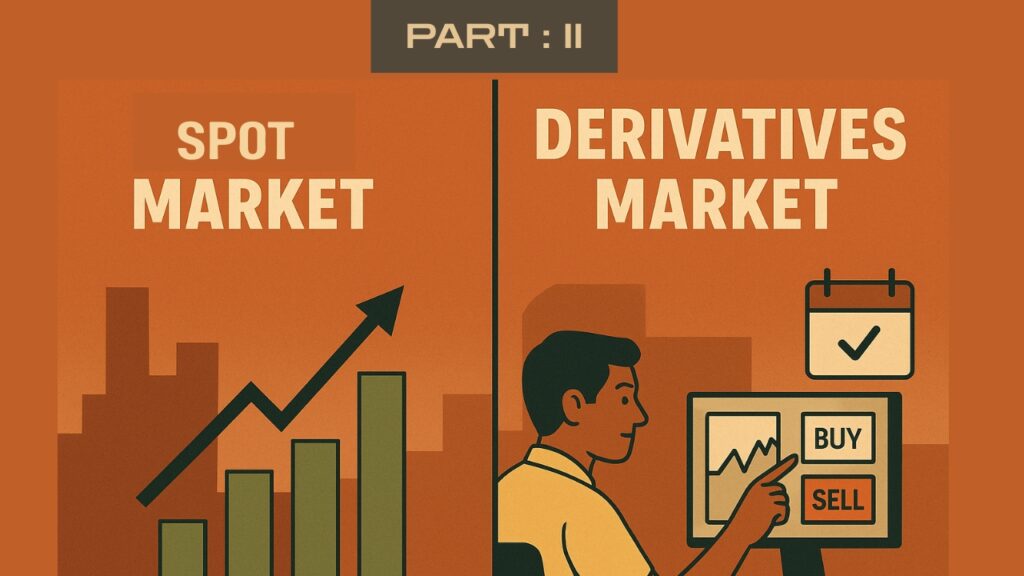What is the Spot/Cash Market?
Welcome to the Bazaar:
Let’s imagine you’re walking through a street bazaar.
You see tomatoes. ₹20 per kilo. You pay cash. You take the tomatoes home.
Boom. That’s the spot market — also called the cash market.
Spot = Immediate. Real. Tangible.
Whether it’s gold, stocks, rice, or cryptocurrency — the spot market is where you buy or sell an asset right now at the current market price (also called the spot price).
No contracts. No promises. Just money in, goods out.
Mechanics of the Spot Market:
- Price Discovery: Happens through demand and supply.
More buyers than sellers? Price goes up.
More sellers than buyers? Price drops. - Settlement: Usually T+1 or T+2 (i.e., trade day + 1 or 2 days) in most stock markets.
In real bazaars? It’s instant — hand over the cash, grab the goods.
So when you buy shares of Infosys today on NSE and receive them in your demat account in 2 days — that’s spot market action.
Why Do We Need Derivatives on Spot Markets?
The Future is Uncertain — and That’s Exactly Why Derivatives Exist
Imagine a tomato vendor (let’s call him Raju) in that same bazaar.
He sells tomatoes for ₹20/kg today. But what if prices crash to ₹10 next week? He’s at risk.
Enter a trader, Seema, who says:
“Hey Raju, I’ll buy your tomatoes next week at ₹18/kg — deal?”
Boom. That’s a forward contract.
Now multiply this across commodities, currencies, stocks, even weather — and you’ve built the case for derivatives.
Why Do We Need Derivatives?
- Volatility:
Spot markets are jumpy.
Prices fluctuate based on news, war, inflation, Elon Musk’s tweets — you name it. - Price Protection (Hedging):
Derivatives act like financial seatbelts.
They don’t stop the crash, but they can save your portfolio from flying out the windshield. - Speculation:
Want to bet on Reliance stock going up without buying the stock? Use derivatives.
Cheap entry, magnified returns. (And risks. Big risks.) - Leverage:
You control a ₹10 lakh position with just ₹1 lakh margin.
It’s like booking a ₹1 crore flat with a ₹1 lakh token — but in finance. - Liquidity & Innovation:
Derivatives add more players to the market. More strategies. More instruments.
It’s where finance gets creative — options strategies, calendar spreads, collars, butterflies. 🦋
Think of the Spot Market as the Real World.
Derivatives? That’s the Financial Multiverse — where you trade on what might happen, not what is.
Coming Up Next in Part 3:
Anatomy of a Futures Contract — Understanding the Blueprint of a Derivative
- What exactly is inside a futures contract?
- How are they standardized?
- Who enforces them?
- What makes them safer (and sometimes riskier) than forwards?
We’ll dissect a futures contract like it’s a Marvel origin story.

